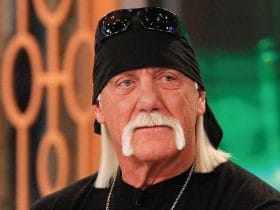While we pass on our knowledge to our players, who helps keep our skills sharp? James Wagenschutz talks about coach development with SCW’s Steph Fairbairn
James Wagenschutz has been an assistant coach at Colorado College and Regis University but is now a coach educator for United Soccer Coaches and USSF.
James Wagenschutz is an applied sports scientist and sports performance coach who has been in football for almost 25 years.
He holds a USSF A license and has used it to coach in the collegiate game, including notable stints as an assistant men’s soccer coach at Colorado College and Regis University, and his daughter’s U5s team.
He is now a coach educator for United Soccer Coaches and the USSF, and runs his own consultancy, W Sports Performance, working with MLS players and Olympic athletes.
SCW spoke to James at the United Soccer Coaches Convention about how players and coaches learn and develop…
SCW: Tell us some of the important things you think soccer players should learn.
JW: Going back to the word ‘should’ – [we used to say] ‘we must’ dribble with our laces or ‘we must’ step with the inside of our foot.
“Now it’s not about ‘should’ or ‘must’ or ‘always’ or ‘don’t’, because that implies that if I don’t do it [that way], then I’m not good.
“We have to meet players where they are, find ways to reinforce the positivity of what they are doing and, as mistakes happen, let them go or reframe them as an opportunity to learn.”
SCW: Does that start with making sure we’re creating a safe space and environment for players to make mistakes?
JW: “Absolutely. It’s the same with coaches and coach education. We have to create a safe space for them to feel like they can speak up, challenge and engage with the content, the philosophy, the curriculum and the way it’s presented.
“It’s a multi-pronged approach to creating a safe space. You might define ‘safe’ as one thing and I might define it as another. So we need to start with the most basic question: how do you define this safe space?”
«How do you want this journey to be? How do you want to be trained? How can I help you?»
“What do you know about yourself that is going to cause a ripple effect, positive or negative, during our time together? Do you know those triggers? Are you asking yourself those questions so that you can then say, ‘I’m in a safe place.’ You’re able to think openly about taking in new information and applying it.”
SCW: Are those questions that you would ask explicitly at the beginning of working with a coach and educating them?
JW: Yes. There are many benefits to having a pre-course form that tells me a little bit about you.
“At the same time, we are providing the structure in which they tell us about ourselves, which almost limits, perhaps, their ability to speak freely.
If I create a document that seems intimidating, is too much to complete, or the language is too difficult, they may have difficulty completing it.
“Part of the art of interacting with these coaches in the beginning is, ‘What do I need to give you and what can you give me to help each other on this journey?'”
“The most important thing is that I am here to serve the coach. They need to know that I am there to help and guide them, not to criticize or judge them, and to let them know at the same time that there are assessments and standards, and we are trying to lead them towards those standards and competencies.”
SCW: What are some of the challenges you see coaches needing support with?
JW: “Freeing up their schedule. I think partly because coaches help, guide and facilitate, we are eager to do more than we can actually do. So we take on more.”
“When we take on more, we cloud our brains with more things to do. So we need to free up space in our brains: reflection, meditation, walking, exercise, no phone, no electronic devices. And coaches also need to learn the skill of saying no.”
SCW: Do you think we have a culture in training that says ‘the harder you work, the better you get’? Does that need to be challenged?
JW: I can only speak to the culture I work in. Sometimes how we were raised and coached is how we coach our players.
Depending on when you were born, there might be something to do with the culture of working hard. People who are baby boomers say, ‘I want a particular house and lifestyle. That means I need to work harder and longer to get those things.’
So if you look at the demographics of players, generally speaking, the majority of male players who make it professionally are the ones who outperform other players.
“It comes down to effort and determination and also a bit of luck along the way. Maybe someone will pick them up in talent identification.”
“That’s reinforced if they decide to become coaches. I know that if I put in an extra 10 hours if I keep working longer and check my phone late at night, I’ll be more productive.” Does productive mean better? Not always.
“Does he need to be challenged? I would offer that coaches who are clear with themselves can create clear environments for their players, and a safer environment in a really structured way where they can help develop players logically.”
SCW: In terms of being clear, is that clarity about who you are as a coach, who you coach, and what you want your coaching to be like?
JW: “Absolutely. It’s about understanding a little bit more about your purpose as a coach. It should be the number one question: why do you coach?”
What does that give you as a coach? What kind of emotional feedback do you get from coaching? How does that serve you in your life?
“Most of us will never come to the absolute answer. It would be amazing to wake up one day and think, ‘I know who I am and I know what my purpose in life is!'”
«The reality is that most of us are still on that journey, but we never take the time to truly identify those greatest strengths.
“Why don’t we apply those 80% of the time because that will be more productive than trying to work on all of our weaknesses?”
SCW: Do we have to think about that in the context of the players as well?
JW: “Absolutely, that’s a great point. Nobody is going to tell Lionel Messi ‘you can’t dribble anymore’, because that’s one of the best things he can do.
“You have to be able to put players like him, and others who can dribble, in positions to absolutely thrive.”
“When do we realize that? That’s the question. Does it happen at [ages] 5, 6 or 7? Does it happen at 12 or 14? Those are the complex questions that we as coaches ask ourselves all over the world all the time.”
SCW: Should we be open to it happening at any time and let players develop as they develop?
JW: I believe in that. I don’t believe in just total reign, but I do believe in free play or unstructured play as part of that development.
“I think if we’re talking about a youth player signing up to enter a particular environment, the family should know what the rules of participation are for that environment.
We need to allow for more autonomy, especially within the game, so that players can perceive and make decisions within the game.
“Someone might get the light bulb [moment] at six years old and it stays, or they might get the light bulb at 18.”











Leave a Review